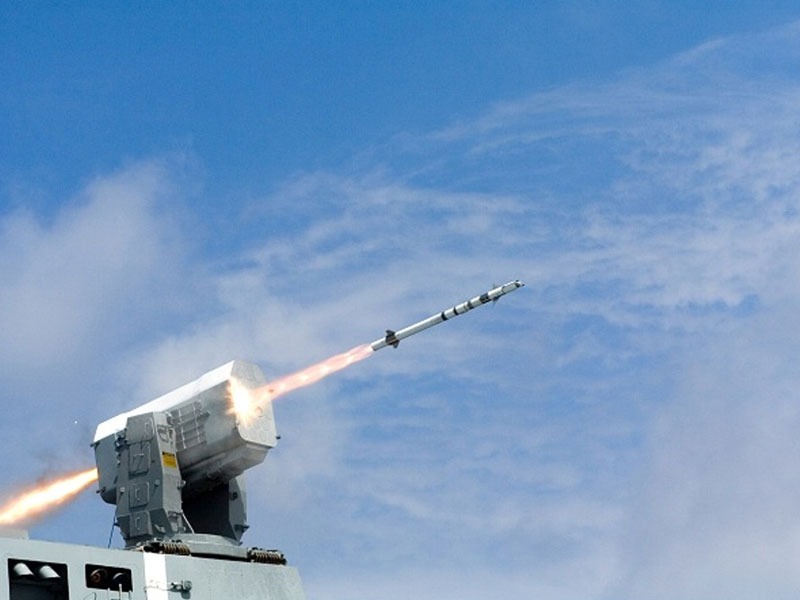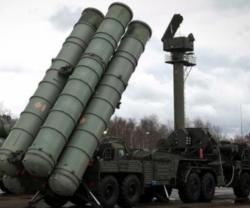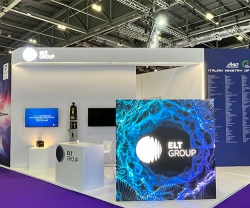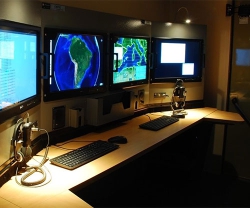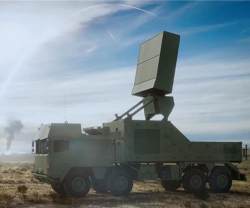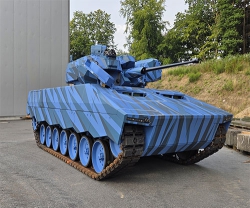Raytheon’s RAM Block 2 Completes Initial Fleet Firing
09.08.2013 North America
The U.S. Navy completed the first fleet firing of Raytheon's Rolling Airframe Missile Block 2 as part of its ongoing developmental and operational testing (DT/OT).
In an at-sea test conducted from the USS Arlington (LPD 24), two RAM Block 2 missiles engaged a subsonic target in a scenario designed to demonstrate the advanced missile's defensive capabilities.
This test builds on three DT/OT tests conducted from the U.S. Navy's Self-Defense Test Ship earlier this year. Those firings successfully engaged both supersonic and sub-sonic maneuvering targets with all RAM Block 2 missiles meeting test objectives. The RAM Block 2 missile is now a perfect 4-for-4 in DT/OT engagements since the start of government testing.
“The first RAM Block 2 firing from a U.S. Navy ship is the culmination of a very strenuous government and industry test program,” said Rick Nelson, Vice President of Raytheon Missile Systems' Naval and Area Defense product line.
“We now focus on the U.S. Navy's initial operational capability milestone along with delivery of the first RAM Block 2 production missiles in 2014,” he added.
Raytheon and its manufacturing partner RAMSYS of Germany were awarded the second U.S. Navy RAM Block 2 low-rate production contract for 61 missiles in December 2012. In addition, as previously reported, Raytheon and RAMSYS received a production contract for 445 RAM Block 2 missiles from the German navy earlier this year.
RAM is a supersonic, lightweight, quick reaction, fire-and-forget missile providing defense against anti-ship cruise missiles, helicopter and airborne threats, and hostile surface craft. The missile's autonomous dual-mode, passive radio frequency and infrared guidance design provide a high-firepower capability for engaging multiple threats simultaneously. RAM is installed, or planned for installation, aboard more than 170 ships as an integral self-defense weapon for the navies of Egypt, Germany, Greece, Japan, the Republic of Korea, Turkey, the United Arab Emirates (UAE) and the United States.
The RAM Block 2 upgrade includes a four-axis independent control actuator system and an increase in rocket motor capability, increasing the missile's effective range and delivering a significant increase in maneuverability. The improved missile also incorporates an upgraded passive radio frequency seeker, a digital autopilot and engineering changes in selected infrared seeker components.
In an at-sea test conducted from the USS Arlington (LPD 24), two RAM Block 2 missiles engaged a subsonic target in a scenario designed to demonstrate the advanced missile's defensive capabilities.
This test builds on three DT/OT tests conducted from the U.S. Navy's Self-Defense Test Ship earlier this year. Those firings successfully engaged both supersonic and sub-sonic maneuvering targets with all RAM Block 2 missiles meeting test objectives. The RAM Block 2 missile is now a perfect 4-for-4 in DT/OT engagements since the start of government testing.
“The first RAM Block 2 firing from a U.S. Navy ship is the culmination of a very strenuous government and industry test program,” said Rick Nelson, Vice President of Raytheon Missile Systems' Naval and Area Defense product line.
“We now focus on the U.S. Navy's initial operational capability milestone along with delivery of the first RAM Block 2 production missiles in 2014,” he added.
Raytheon and its manufacturing partner RAMSYS of Germany were awarded the second U.S. Navy RAM Block 2 low-rate production contract for 61 missiles in December 2012. In addition, as previously reported, Raytheon and RAMSYS received a production contract for 445 RAM Block 2 missiles from the German navy earlier this year.
RAM is a supersonic, lightweight, quick reaction, fire-and-forget missile providing defense against anti-ship cruise missiles, helicopter and airborne threats, and hostile surface craft. The missile's autonomous dual-mode, passive radio frequency and infrared guidance design provide a high-firepower capability for engaging multiple threats simultaneously. RAM is installed, or planned for installation, aboard more than 170 ships as an integral self-defense weapon for the navies of Egypt, Germany, Greece, Japan, the Republic of Korea, Turkey, the United Arab Emirates (UAE) and the United States.
The RAM Block 2 upgrade includes a four-axis independent control actuator system and an increase in rocket motor capability, increasing the missile's effective range and delivering a significant increase in maneuverability. The improved missile also incorporates an upgraded passive radio frequency seeker, a digital autopilot and engineering changes in selected infrared seeker components.
Latest news
Latest events
DSEI 2025
09 - 12 Sep 2025Excel, London - United KingdomCounter UAS Middle East & Africa 2025
16 - 17 Sep 2025Amman - JordanIntersec Saudi Arabia
29 Sep - 01 Oct 2025Riyadh International Exhibition & Convention Centre - Saudi ArabiaDubai International Air Chiefs’ Conference (DIACC 2025)
16 Nov 2025Atlantis, The Palm Dubai - United Arab Emirates

